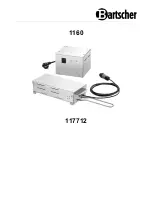
Duct Unit Installation
DUCT SMOKE LOCATION PRE-REQUISITES:
This guideline contains general information on duct smoke detector installation, but does not preclude the NFPA documents listed. Maple Chase
Company assumes no responsibility for improperly installed duct detectors. To determine the correct installation position for a Firex Duct Smoke
Detector, the following factors must be considered.
1)
A uniform non turbulent airflow of between 500 ft/min to 4000 ft/min. must be present in the HVAC duct. To determine the duct
velocities examine the engineering specifications that define the expected velocities or use an Alnor model 6000P
velocity/meter (or equivalent).
2)
In order to prevent stratification, duct smoke units, where possible, must be located a minimum of six duct widths down stream
from a source of turbulence i.e. elbows, deflector plates, filters, dampers, and inlets.
In installations where it is impossible to adhere to the six duct width requirement, units can be installed closer but as far from inlets, bends or
deflector plates as possible. Should this situation arise, check velocity readings in the duct prior to the duct smoke unit installation. Ensure the
duct smoke unit pressure differential complies with the unit specifications. The pressure differential between the input sampling tube and
exhaust tube for the Firex series duct smoke unit should be greater than 0.01 inches of water and less than 1.2 inches of water.
3)
Identify a location for the installation of the duct unit that will permit easy access for viewing and serviceability.
4)
Install duct units in the return air side of an HVAC unit prior to the air being exhausted from the building or diluted with outside air.
5)
When installing duct smoke units down stream of filters, fires occurring in the filters will be detected, but if the filters become blocked
insufficient air flow through the duct unit will prevent the correct operation of the duct detector.
6)
Where possible, install duct detectors upstream of air humidifiers and downstream of dehumidifiers.
7)
To prevent false alarms, the duct detector should not be mounted in areas of extreme high or low temperatures, in areas where high
humidity exists or in areas where the duct may contain gases or excess dust.
SAMPLING TUBE ASSEMBLY
:
Sampling tubes are to be ordered separately in one of the 3 standard lengths.
532
For duct widths of
1.0’ TO 2.5’
533
For duct widths of
2.5’ TO 5.0’
534
For duct widths of
5.0’ TO 10.0’
The standard sampling tubes are steel tubes with air intake holes drilled down the entire length of the tube. These tubes must be cut to length
and must span the entire width of the duct. Sampling tubes over 3.0 feet must be supported on the opposite side of the duct. To ensure the
correct operation of the sensing tube, the red end cap (red stopper in installation kit) must be inserted in the end of the air intake sampling tube.
Once the airflow direction has been determined, insert the inlet and exhaust tubes into the sampling tube connectors fitted to the back of the
duct smoke detector which are equipped with set screws. These connectors will allow the tubes to be correctly orientated and secured by
tightening the set screw. Ensure air intake sampling tube is positioned so that the inlet holes are facing the airflow.
2
6 Duct Widths
Minimum
Bend or Other
Obstruction
Insert Red Stopper
This End of Inlet Tube
Air Flow
Tube Support Hole Only for Ducts
Greater than 3 Feet Wide
Duct Width
Air Flow
Direction
Exhaust Tube
Installed Downstream of
Air Flow
Do Not Insert
Red Stopper
Set
Screw
Holes Face
Air Flow
Inlet Tube
2650 Duct Smoke
Detector


























